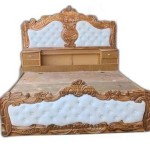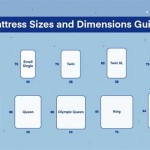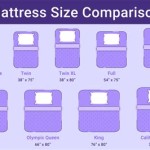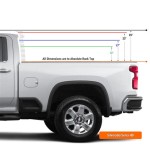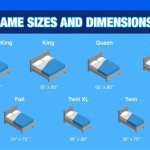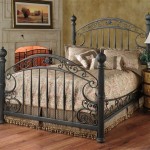What Size Sheets Go On A Hospital Bed?
Determining the correct sheet size for a hospital bed is crucial for ensuring patient comfort, preventing pressure sores, and maintaining hygiene. Unlike standard residential beds, hospital beds often have unique dimensions and features, such as adjustable sections and specific mattress types. Therefore, employing standard retail sheet sizes typically proves inadequate. The following article will explore the specific dimensions of hospital beds, the appropriate sheet sizes required, factors influencing sheet selection, and considerations for different types of hospital bed mattresses.
Hospital beds are designed for both functionality and patient well-being. They facilitate medical care and provide patients with a comfortable resting place. Because of their specialized nature, understanding the correct sheet sizes is paramount for healthcare facilities and caregivers alike.
Standard Hospital Bed Dimensions
The most common size for a hospital bed is a twin-size bed. This usually translates to a width of 36 inches and a length of 80 inches. However, it is imperative to acknowledge that variations exist. Bariatric beds, designed for larger patients, often exceed these standard dimensions. Similarly, pediatric hospital beds are significantly smaller.
Understanding the actual dimensions of the specific hospital bed in question is the first step in selecting the right sheet size. Simply assuming the bed is the standard size can lead to improperly fitting sheets, which can cause discomfort, hygiene issues, and even contribute to skin breakdown.
Manufacturers sometimes have slight variations in their bed designs so it's important to always double check. A quick measurement of the mattress's width and length provides the most accurate information.
The depth of the mattress also needs to be taken into consideration. While the width and length are the primary dimensions, the mattress thickness determines how deep the fitted sheet's pockets need to be. Thicker mattresses, especially those with features like pressure redistribution, necessitate fitted sheets with deeper pockets to ensure a secure and proper fit.
Appropriate Sheet Sizes for Hospital Beds
Given the standard hospital bed dimensions of 36 inches by 80 inches, the most suitable sheet size is indeed a twin. However, due to the variance in mattress depth, specific product dimensions vary based on manufacturer. Therefore, it’s important to look for sheets specifically marketed as "hospital bed sheets" or those with the correct dimensions to fit 36" x 80" x mattress depth."
Fitted sheets are the most common choice for hospital beds, as they provide a secure and snug fit around the mattress. Flat sheets are used as the top sheet and need to be wide and long enough to be tucked in securely on all sides. Inadequate tucking creates loose fabric that can bunch up, creating pressure points and discomfort for the patient. A flat sheet dimension of 66" x 104" is typical for hospital beds.
For bariatric beds, which can range from 42 inches to 48 inches wide and 80 inches to 88 inches long, specialized bariatric sheets are required. These are generally available from medical supply companies who specifically cater to providing care for larger patients.
It is crucial to prioritize fitted sheets with elastic all around the perimeter and deep pockets to ensure they stay securely in place, even when the bed is adjusted to different positions. Sheets with only elastic at the corners are prone to slipping and bunching.
The correct dimensions of the sheet depend not only on the dimensions of the mattress but also on the depth of the mattress. Purchasing extra-deep fitted sheets is ideal for accomodating thicker mattresses. This provides better compliance with infection control practices.
Factors Influencing Sheet Selection for Hospital Beds
Several factors influence the appropriate sheet selection for hospital beds beyond just the physical dimensions. These include the material of the sheet, the patient's skin condition, infection control protocols, and budget constraints.
Cotton sheets are a common choice due to their comfort and breathability. However, cotton can absorb moisture, potentially leading to skin maceration and pressure sores in patients who are incontinent or perspire heavily. Blended fabrics, such as cotton-polyester, offer enhanced durability and moisture-wicking properties.
Patients with sensitive skin or allergies may benefit from hypoallergenic sheets made from materials like bamboo or microfiber. These materials are less likely to cause irritation and are often softer to the touch. Consideration should also be given to the dying process, as some dyes can be irritating to the skin.
Infection control is of paramount importance in healthcare settings. Sheets made from tightly woven fabrics are more resistant to harboring bacteria and are easier to clean and disinfect. Following the manufacturer's recommended washing instructions is crucial to maintain hygiene and prevent the spread of infection. Single-use disposable sheets are also sometimes used, although these are generally only used for short term stays.
The frequency of sheet changes also dictates the number of sheets required. Healthcare facilities need an adequate supply of sheets to ensure clean linens are always available. Having a sufficient inventory avoids the need for rushing laundry processes, which can compromise hygiene.
Budget constraints can also play a role in sheet selection. However, it is important to prioritize quality and durability over cost. Investing in high-quality sheets that withstand frequent washing and usage proves more cost-effective in the long run.
Considerations for Different Types of Hospital Bed Mattresses
Hospital bed mattresses come in various types, each designed to address specific patient needs. Common types include standard foam mattresses, pressure redistribution mattresses, and air mattresses. The type of mattress impacts the sheet selection process.
Standard foam mattresses are relatively thin and require only standard-depth fitted sheets. Pressure redistribution mattresses, on the other hand, are designed to minimize pressure points and prevent pressure sores. These mattresses are often thicker and have unique contours, necessitating deep-pocket fitted sheets to ensure a secure fit.
Air mattresses, also known as alternating pressure mattresses, consist of inflatable air cells that alternately inflate and deflate to redistribute pressure. These mattresses can be quite thick and require specialized fitted sheets that accommodate their dynamic nature. The sheets must be able to stretch and conform to the changing shape of the mattress without bunching up or restricting its function.
When selecting sheets for pressure redistribution or air mattresses, it is crucial to choose fabrics that do not impede the mattress's ability to redistribute pressure. Thick, non-stretchable sheets can negate the benefits of these specialized mattresses. Look for sheets made from stretchy, breathable fabrics that allow the mattress to conform to the patient's body without creating pressure points.
Some mattresses have waterproof or fluid-resistant covers. In these cases, it may be beneficial to use moisture-wicking sheets to help keep the patient dry and comfortable. Conversely, if the mattress cover is not waterproof, a waterproof mattress protector should be used beneath the fitted sheet to prevent soiling and damage.
The weight capacity of the sheets is another factor to consider, especially for bariatric beds. Selecting sheets that are designed to withstand the weight of larger patients ensures durability and prevents tearing or damage.
Ultimately, selecting the correct sheet size and material for a hospital bed requires careful consideration of the bed's dimensions, mattress type, patient's needs, and infection control protocols. Prioritizing patient comfort, safety, and hygiene is paramount in making the right choice.
How To Choose Hospital Bed Sheets And Bedding

Hospital Bed Sheet Sizes A Comprehensive Guide

What Size Sheets Go On A Hospital Bed

What Size Sheets For Hospital Bed And How To Choose

What Size Sheets For Hospital Bed And How To Choose

What Size Sheets For Hospital Bed A Complete Guide 2024

Hospital Bed Sheets Size Guide Alsco Uniforms

What Size Sheets Go On A Hospital Bed

Bedding Fitted Hospital Bed Sheets All Around Elastic Knitted Sheet Set 4 Pack
Hospital Bed Sheets And Pillowcase Set Twin Xl Size

